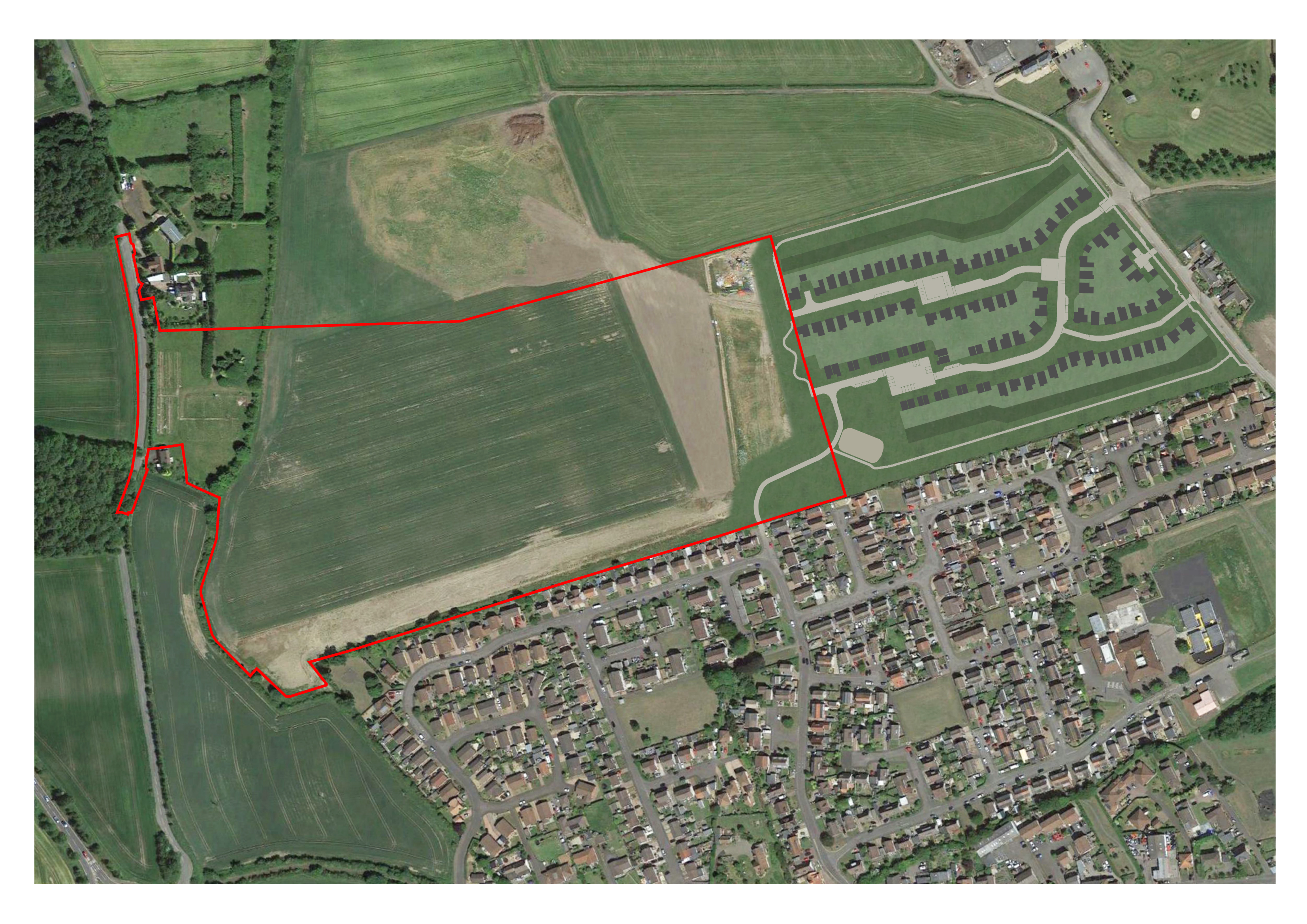Building Briefs - September 7th
- Dumfries & Galloway College launches ground-breaking Green Energy Hub
A new £1.8 million Green Energy Hub has been launched at Dumfries and Galloway College thanks to funding from SP Energy Networks’ Green Economy Fund.
The hub was officially opened by Principal Joanna Campbell and SP Energy Networks’ chief executive, Frank Mitchell, at a ceremony at the college’s Dumfries campus.
The Principal and Mr Mitchell were joined by local MSP, Joan McAlpine, for the launch event and a tour of the new hub.
The hub will promote sustainable economic growth, increased air quality and other aspects of environmental forward-planning in the region.
The technology provided by the hub will allow access to a significant range of practical solutions to the challenges of heating, power, and water supply faced by the college as well as creating a valuable teaching tool for students.
The Green Economy Fund has awarded £195,000 to these technologies which are not only being utilised to provide power and heat to the hub, they will also be used as teaching aids. Technologies include a wind turbine, heat pumps, solar arrays, battery storage and EV charging points.
The fund supports the Scottish Government’s ambitious plans to meet climate change targets and aims to boost local economic growth, improve air quality and deliver a better future, quicker for all. Funded projects are critical to green recovery as the UK economy recovers from the impact of COVID-19.
Dumfries and Galloway College, led by Principal Joanna Campbell and her team, is committed to playing a positive role in the South of Scotland, particularly in terms of economic growth and sustainability, and the establishment of this leading facility is the latest way in which this has been put into practice.
So far, 33 projects have been awarded funding from SP Energy Networks’ Green Economy Fund across Central and Southern Scotland to make real, lasting, and positive change across the country.
- Rail works to inform project development for Fife and Clackmannanshire
Network Rail will shortly begin the next phase of development work between Alloa and Longannet which could see the reinstatement of passenger services between Clackmannanshire and Fife.

Engineers will be carrying out survey work and site and geological investigations which will help inform the development of a project which could enhance and electrify the former freight line and see the introduction of three new stations at Clackmannan, Kincardine and Longannet.
In line with the Scottish Government’s rail decarbonisation agenda, the line would also be electrified with the ambition to introduce a half hourly passenger service between Alloa and Longannet.
This phase of work will include surveying, drilling boreholes, sampling ballast and extracting core samples to assess the condition of the ground under the railway. A variety of equipment including boring rigs, and drills will be used all along the 11.5 km line with work ongoing until the end of the year.
- Local knowledge sought for new Strathblane flood study
Stirling Council has commenced a new study to develop a fuller understanding of the flood risk for Strathblane.

Strathblane and Blanefield were badly hit by separate incidents of heavy rain downfall during 2019.
In an effort to create more accurate flood maps for the area, the council is asking for the community’s help to provide any historical flooding information they may have.
Anyone with knowledge or photographs of flooding in the Strathblane area is being asked by the council to contribute to the study, which is available here.
The project has been split into two stages, with the first focusing on the mapping of flood risk and the development of a short list of options to address areas at risk. Stage 2 will use the Scottish Government and SEPA guidance to assess the economic benefits of these options and the potential for the council to promote flood alleviation measures.
- Free webinar for tenement owners in Argyll and Bute
Owners of tenement properties who need advice on general maintenance issues or how to agree common repairs with co-owners are being invited to a free webinar next week.
In the run-up to this year’s virtual Doors Open Days in Argyll and Bute, a free webinar will be held on September 13 aimed at tenement property owners who are looking for advice on any topic relating to maintaining their property. The webinar includes a live Q&A where audience members can ask a panel of experts about any repair issues.
Authors John Gilbert and Annie Flint of Under One Roof Scotland, a website for tenement owners in Scotland, will be in conversation with Nick Blair of ZM Architects and Gordon Matheson of Matheson Plumbing. John Gilbert and Nick Blair will be talking from their extensive knowledge of maintaining stone buildings and tenements, especially those in Rothesay and Campbeltown.
Gordon Matheson will join them to talk about the use of lead in buildings and possible substitutes. Annie Flint, a specialist in managing tenements will join the team for the live Q&A.
Those interested in attending the webinar can use this link.
People can also send photos of repair problems and general questions in advance to info@underoneroof.scot with the subject ‘Argyll Doors Open Q&A’.
Argyll and Bute’s Doors Open Days weekend is September 26-27.
- North Ayrshire Council facing £15m funding shortfall due to coronavirus
North Ayrshire Council has outlined the “significant gap” in its funding following the COVID-19 pandemic with infrastructure and housing among the areas to be impacted.
The net financial impact of the pandemic lockdown on the local authority is currently expected to be approximately £15.475 million for the financial year 2020/21.
The overall figure includes a £2.2m impact on the Capital Fund, which pays for major infrastructure projects. The impact on the Housing Revenue Account, which deals with the council housing stock and house building programme, is projected to be approximately £3.7m.
The council has been monitoring its financial position to help mitigate the impact while continuing to provide essential services and a report due to go before cabinet tomorrow will lay out the projected financial impact of COVID-19 as well as the measures taken so far to minimise the impact.
Included in the projected net cost for 2020/21 is £9.6m from the General Revenue Account – which pays for day-to-day council services. This includes lost income to the council and the costs of services such as food provision and support to families of children eligible for free school meals; workforce, building and PPE costs; additional costs for education and early years and mitigating the financial impact on KA Leisure.
In order to address the projected cost impact for 2020/21, a Finance Recovery Plan has been developed which aims to protect jobs and services as well as mitigating any impact on the 2021/22 Budget.
On Tuesday, cabinet will also consider the COVID-19 Economic Recovery and Renewal Approach which will be targeted towards building an inclusive economy that works for everyone in North Ayrshire will include a specific focus on areas such as Community Wealth Building and climate change.
- Home Fix Scotland to work through repairs backlog with return to full service
Repairs and maintenance contractor Home Fix Scotland (HFS) has set out its vision for its future following its return to full service last week.
Routine repairs and planned maintenance had been suspended since March 19 as government guidelines sought to stem the spread of coronavirus across the country.
With many residents shielding or self-isolating, Home Fix Scotland ran a reduced, skeleton service, carrying out essential emergency works only.
From September 14, staff will begin working through a backlog of routine and planned maintenance with over 816 tasks outstanding.
River Clyde Homes customers will also be able to log repairs as normal from September 28 with inspections recommencing on this date too.
Residents who need repairs carried out at their homes will be contacted by telephone to discuss dates and times, coronavirus safety measures and whether or not anyone in the house is self-isolating or shielding.
Keeping both customers and staff safe remains the priority with HFS’s Health & Safety Team tasked with carrying out risk assessments and implementing safe working measures.
While the news is to be welcomed, customers with outstanding repairs and maintenance requests are being urged to be patient as staff continue to navigate many of the challenges posed by COVID-19.
Government restrictions, staff availability, sourcing materials and social distancing measures are to name but a few of the obstacles that have resulted in a major repairs backlog with many of the delayed jobs being prioritised first.
- Aberdeenshire Council agrees new ‘lettable standard’ to reduce void periods
A new approach to the way council properties are prepared for new tenants could significantly reduce the time taken for homes to be re-let in Aberdeenshire.

Council homes at North Street, Inverurie
At its meeting last week, Aberdeenshire Council’s communities committee agreed a new ‘lettable standard’ which changes responsibilities for tenants and the council.
The approach aims to reduce the length of time a property is unavailable for use between tenancies, during which time the property is classed as ‘void’.
A review of the council’s void process was carried out last year, with a focus on reducing re-let times. As part of its findings, the council will work with outgoing tenants to undertake any necessary action before they leave a property, with the council progressing upgrades and improvements when a new tenant has moved in.
Workshops held by the housing service saw the number of activities required to be undertaken while a property is empty reduced from 31 to 13, allowing work to be progressed more quickly while a property is empty. Views from tenants on both approaches were sought during a virtual event for tenants at the end of August.
This revised approach also means that incoming tenants will have more of a say on the upgrades in their new home, and will be asked to sign an agreement on the works to be undertaken in their home as part of their acceptance of a tenancy. By reducing the number of days a property is empty, it is anticipated that up to £1 million of rent losses can be avoided.
At Thursday’s meeting, councillors debated two favoured options of the new standard.
The Revised Lettable Standard would see 23 activities, including some maintenance and low-level repairs, undertaken during the outgoing tenancy. A further 17 activities, including additional repairs and improvements, would take place once a new tenant has moved in.
Under this approach, it was envisaged that achieving the lettable standard could be as quick as five days for properties where only minor work is required, 18 days for routine works, and 44 for major works. Officers hoped that revised standard would see the average turnaround time for a property drop from 55 days to just 20.
A second, even more streamlined version of the standards, could see the average drop even further by leaving items such as light fittings and appliances from a previous tenancy in place, with the responsibility for keeping, changing or disposing of them becoming the tenant’s responsibility.
During the discussion, Cllr Iris Walker proposed the adoption of the streamlined version with the additional inclusion of four key elements to ensure that washing machine connections are operational, that cooker spaces have 620mm clearance, that minor mould wash and treatment is undertaken and that defective porches are removed.
Cllr Glen Reynolds favoured the Revised Lettable Standard and suggested it was a “middle of the road approach” which would help tackle the number of void properties considerably.
Cllr Anne Stirling also proposed that regardless of which standard was adopted, there should be a six-month review from the implementation of the changes which would be fed back to committee for discussion. Members voted 9-4 in favour of the streamlined with the four additional procedures and the six-monthly review













